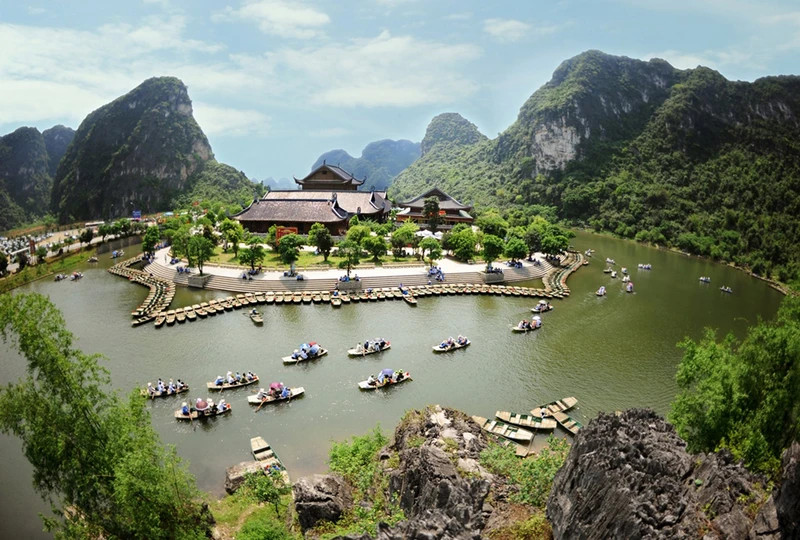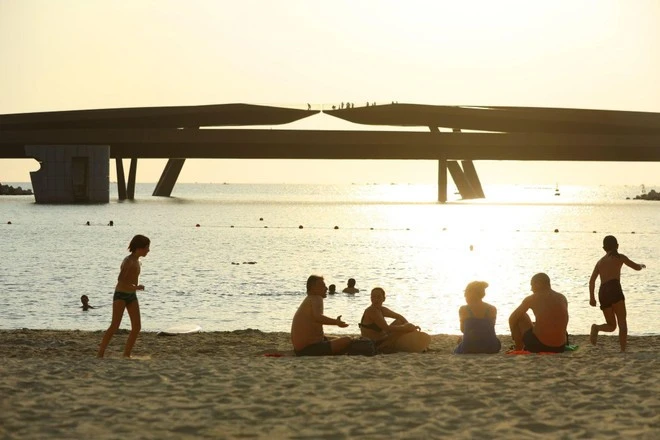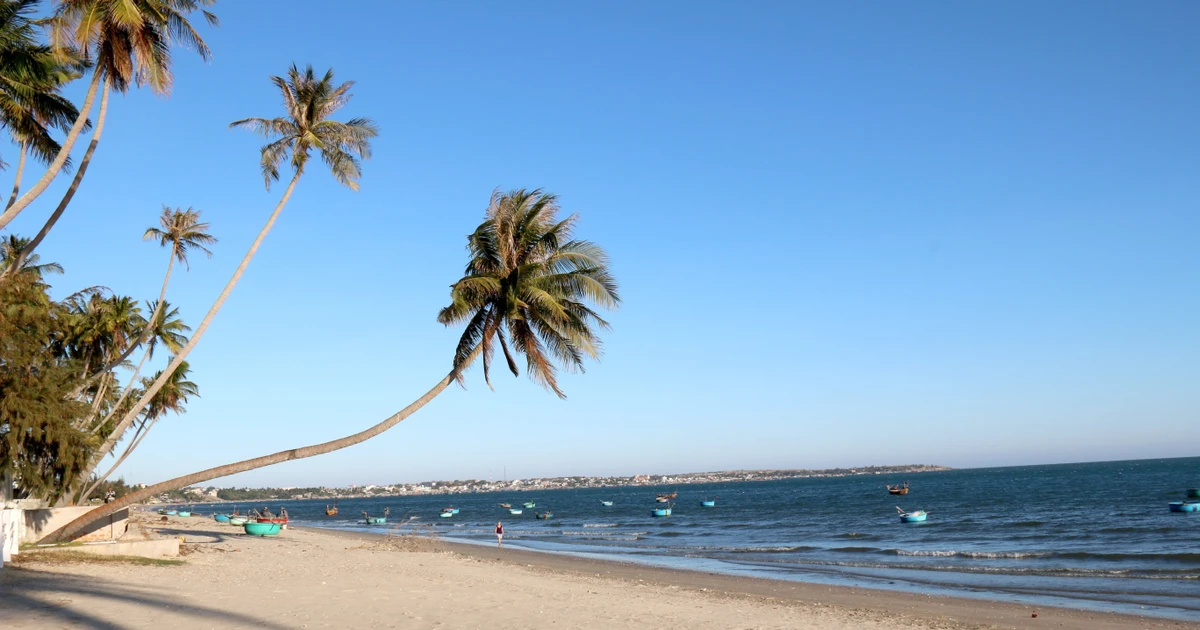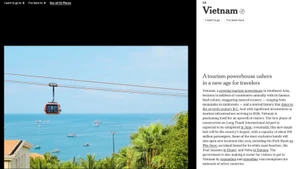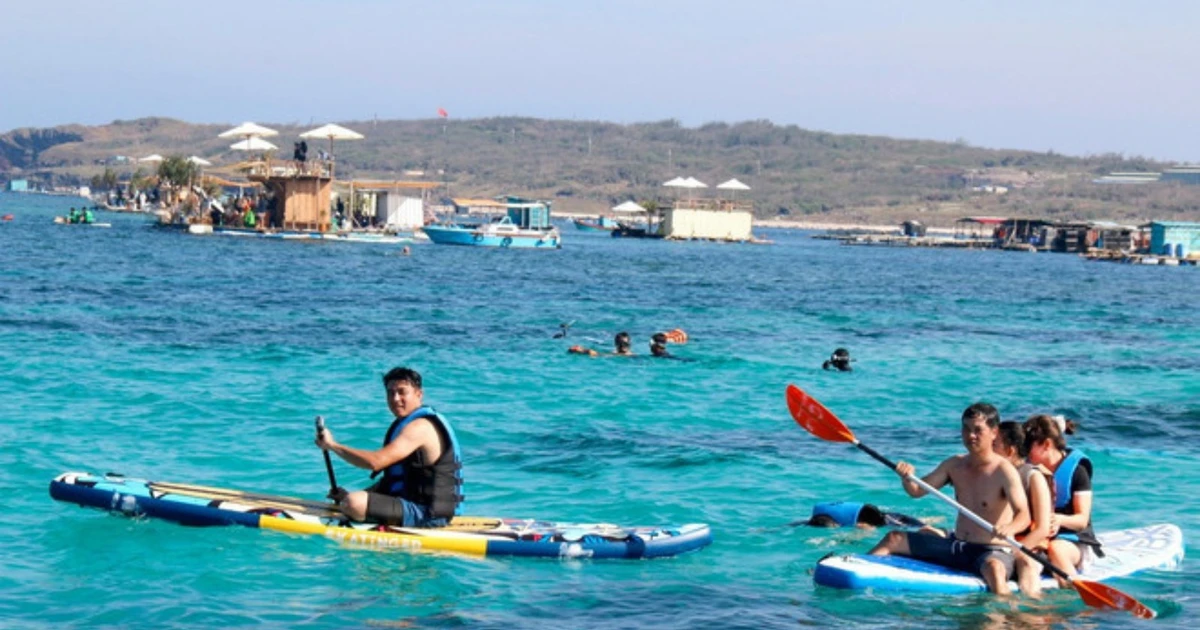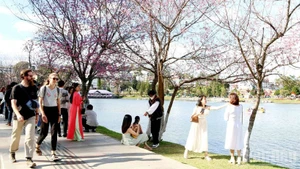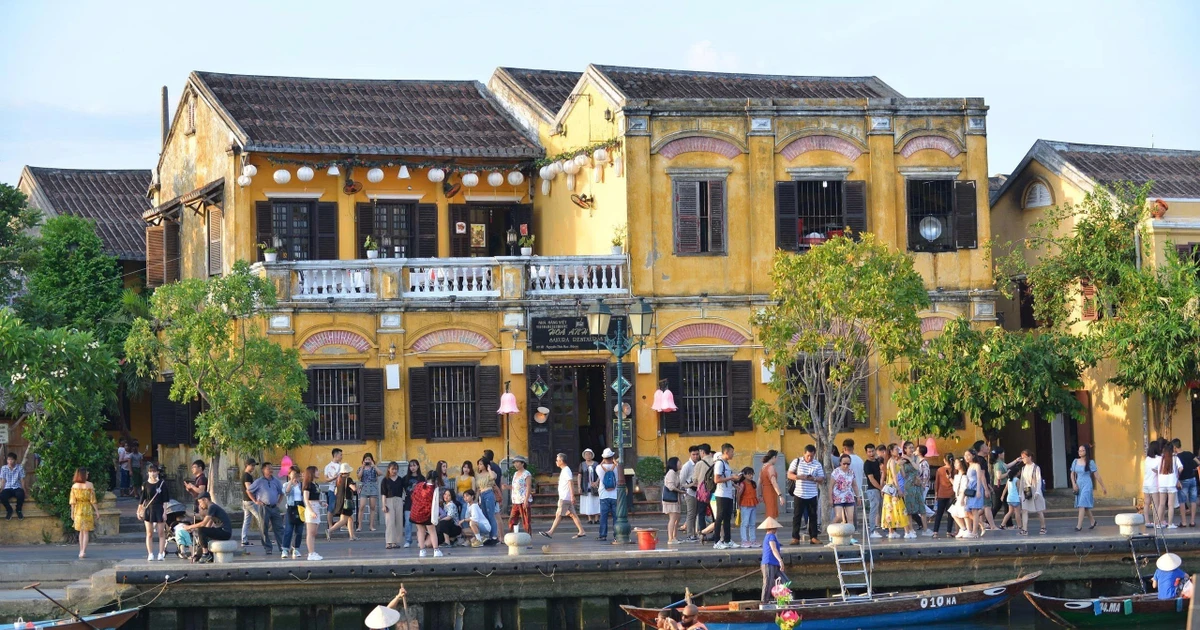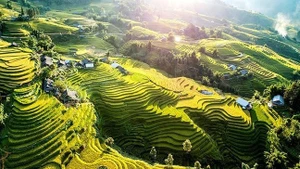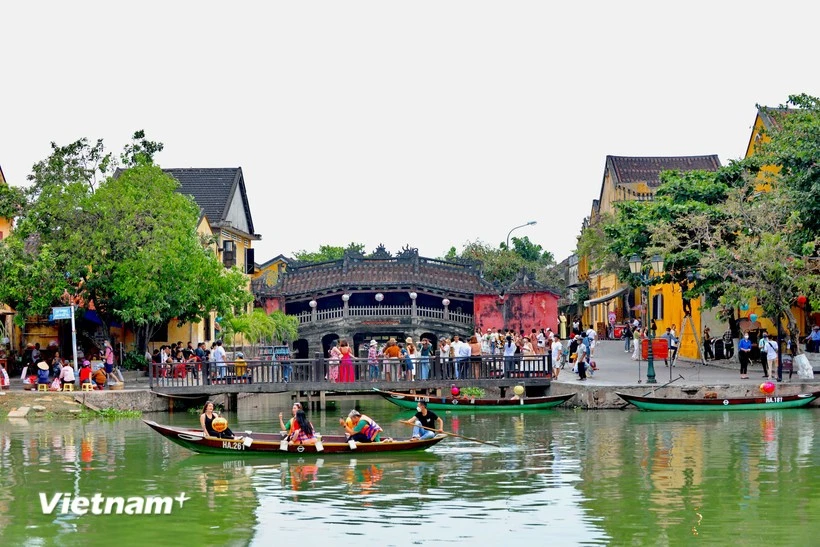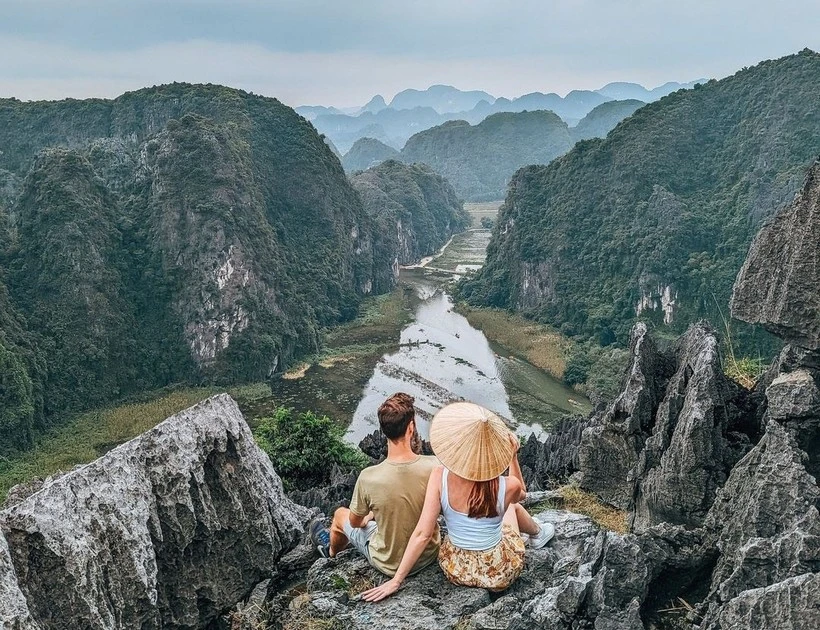The Chronicles keep memories of tens of thousands of years
Coming to Ninh Binh, setting foot in the Cuc Phuong primaeval forest, which was named by the World Travel Awards among Asia's Leading National Parks for five consecutive years (2019 to 2023), visitors will have the opportunity to go back tens of thousands of years to explore the ancient caves, which contain countless priceless relics and sites of prehistoric people.
They could be primitive labour tools including stone axes and knives, terracotta objects such as containers or pots, and even three ancient tombs with fossilised human skeletons, still intact at about 7,500 years old, in the Ancient People Cave. They could be the wide and long Con Moong Cave, which has two connecting doors and a fairly thick cultural layer that was once a permanent residence of a community living by hunting and gathering.
It is impossible not to mention Mang Chieng Cave, with the burial relics of Neolithic people and a complex of stone tools very similar to Hoa Binh Culture. In addition, there are prehistoric caves, such as Trang Khuyet-Son Cung-Pho Ma-Thuy Tien, which were hidden in the middle of the old forest with the surrounding scenery, as beautiful as a fairyland.
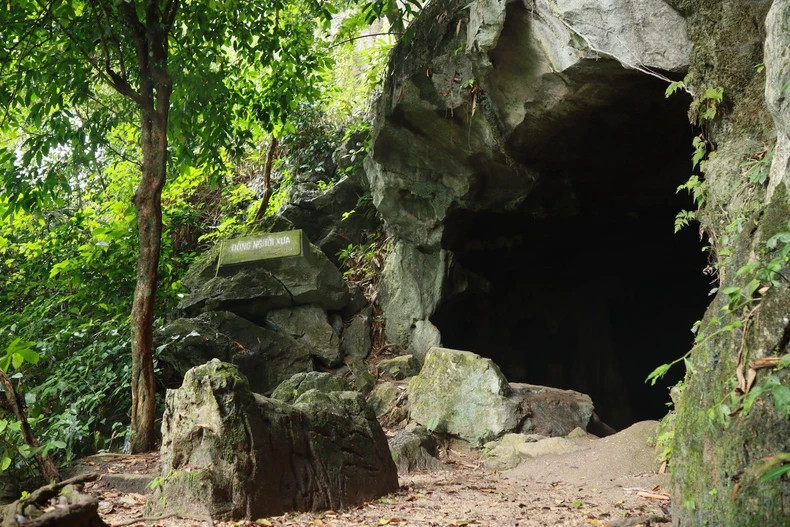 |
| Coming to the Ancient People Cave, visitors can explore and learn about prehistoric human life about 7,500 years ago. (Photo: Cuc Phuong National Park) |
Besides Cuc Phuong National Park, Ninh Binh also possesses a dense collection of priceless archaeological relic sites that Dr Nguyen Viet, Director of the Southeast Asian Prehistory Centre, once listed. These are the seasonal cave relics of the Hoa Binh Culture residents in the style of Trang An (Ninh Binh), during the period of the last ice age (30,000 – 12,000 years ago) or the stopping point of the Au Lac Southward wave (during the time of King An Duong Vuong and after the Trung Sisters' Uprising). These are the solid rear base of the early Dai Viet Feudal Dynasties (Ly-Tran) in the fight against the Yuan-Mongol and Champa invaders, and the "green zone" of the dispute between King Le/Lord Trinh and the Mac Dynasty, among other relic sites. These are also the Vu Lam Palace which was both a resistance base against the Yuan-Mongol invaders and the first place where the Tran Kings converted to Buddhism, with the vestiges of the Tay Son Dynasty’s Tam Diep Defence Line to block the Qing army, among others.
All gathered in this land that has a rich history. They contain too many relics, sites and archaeological artefacts with fascinating stories to be passed down to future generations.
That massive treasure has formed one of the three important criteria that helped Trang An become a rare dual heritage of the region recognised by UNESCO. According to information from the official website of this prestigious global organisation, “Trang An is an outstanding locale within Southeast Asia, for demonstrating the way early humans interacted with the natural landscape and adapted to major changes in climatic, geographical and environmental conditions, over more than 30,000 years. The long cultural history is closely associated with the geological evolution of the Trang An limestone massif in the late Pleistocene and early Holocene times, when the inhabitants endured some of the most turbulent climatic and environmental changes in Earth’s history, including repeated submergence of the landscape due to oscillating sea levels. Within the one compact landscape, there are many sites covering multiple periods and functions, comprising early human settlement systems.”
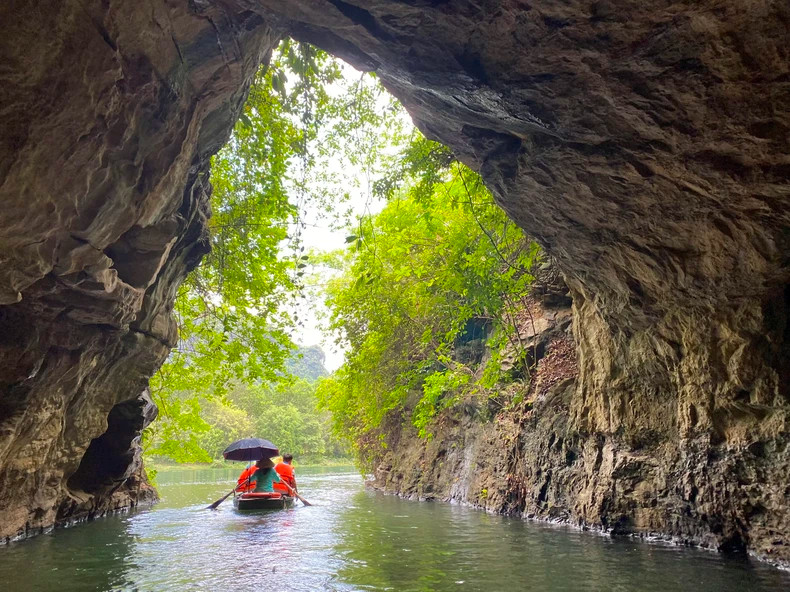 |
| Sitting on a boat to admire the enchanting beauty of Trang An's caves, is an experience favoured by tourists. (Photo: BAO NGOC) |
That archaeological tourism resource is like a “gold mine”, with endless reserves for Ninh Binh to exploit. Tran Song Tung, Vice Chairman of Ninh Binh Provincial People's Committee, once said “The results of the discovery and research of a series of archaeological sites in Trang An’s caves have confirmed that humans have occupied and exploited the swampy and low-lying karst areas in this area very early, at least about 24,500 years ago. They have existed and developed continuously from the Paleolithic Age, through the Neolithic Age, to the Metal Age. from prehistory to history, from primitive times to civilisation”.
To make Trang An truly a link between the past and the present, between history and landscape, and between nature and people, as well as a centre and foundation for building a millennium heritage city in the near future, the formation of the best heritage tourism products, based on archaeological relic sites and artefacts, combined with ethnographic experiences, while meeting the requirements of interpreting the Heritage’s values according to UNESCO's recommendations, is Ninh Binh leaders’ desire released at the forum on "Developing heritage tourism products", on the occasion of Trang An welcoming the 10-year milestone of receiving UNESCO’s recognition.
Promising tourism products
According to Dr Le Thi Lien from the Vietnam Archaeological Association, the forms of archaeological and historical tourism have developed in many places around the world, as an important type or segment of cultural tourism with its own uniqueness and appeal. However, they have not been developed strongly and are not worthy of the potential and advantages of Trang An Scenic Landscape Complex.
 |
| The captivating green beauty on the journey to explore the Tam Coc-Bich Dong route. (Photo: Ninh Binh Provincial Department of Tourism) |
Archaeological tourism promises interesting "adventures" because each archaeological site often brings unique perspectives on human history. This tourism form helps visitors explore, discover and understand the cultures and civilisations of mankind in the past. Currently, archaeological tourism is also expanding as it is combined with other types of tourism, such as eco-geography and heritage.
At the discussion, from the perspective of an expert, Dr Le Thi Lien proposed several products for those who are passionate about exploring the pages of history when coming to Trang An. Visiting prehistoric caves, exploring historical archaeological sites, camping and experiencing historical spaces, and camping in combination with writing topics related to archaeology-history-nature-environment, are four forms that can exploit the heritage’s strengths in the near future.
Dr Vo Thi Phuong Thuy from the Vietnam Academy of Social Sciences said, that archaeological tourism could be a prominent feature of Trang An, a heritage always associated with in-depth scientific research activities.
She also concretised that uniqueness with multi-experience journeys that promise to be highly attractive and unique, such as "Discovering the Hoa Lu Citadel" (combined with natural elements such as limestone mountains, rivers, walls, artificial streams), "Visiting small and closed valleys" (containing many historical legends related to the two Dinh-Le Feudal Dynasties), "Discovering temples and pagodas of the Dinh-Le Dynasties (mostly located in caves in limestone mountains), and "Hiking and trekking through valuable archaeological landscapes" (especially the Hoa Lu "stone capital", where mountains are citadels, caves are palaces and rivers, and streams are paths).
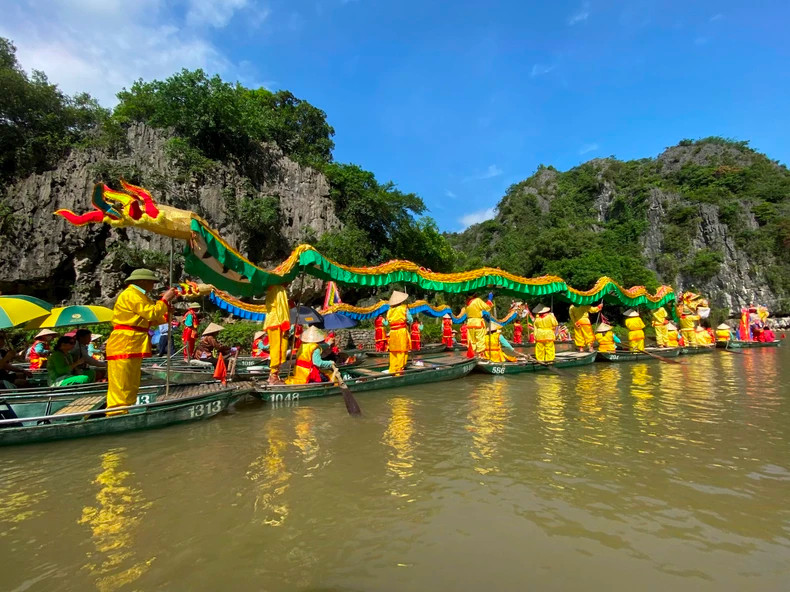 |
| The Ngo Dong River is brilliant during the Tam Coc Yellow Festival. (Photo: Bao Ngoc) |
In 2023, Trang An attracted 4.6 million visitors (out of a total of 6.6 million tourists to Ninh Binh Province), an increase of 83% compared to 2022. To conquer the target of 7.5 million visitors, with an estimated revenue of 8.2 trillion USD, turning Trang An into a new and attractive destination for archaeological tourism is a breakthrough direction for the locality, in the green development journey.
Bui Van Manh, Director of Ninh Binh Provincial Department of Tourism, affirmed “Ninh Binh in general, Trang An in particular, attracts us because of not only the beautiful mother earth but also the way she nurtured humans, as well as their adaptation to the challenges she posed. For future generations to respect the past, love nature, and be responsible for protecting the living environment through the heritage, accessing archaeological sites is creating a trend of sustainable development”.
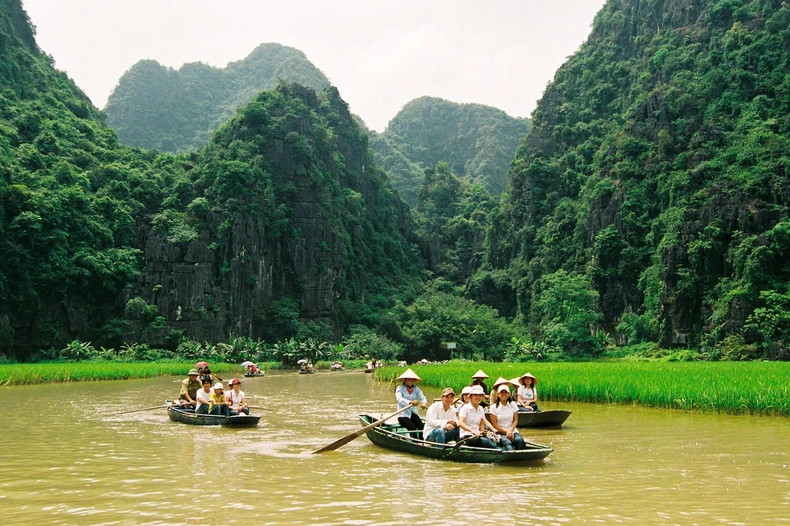 |
| The beauty of Trang An mixed heritage attracts numerous tourists to Ninh Binh. (Photo: Bao Ngoc) |
